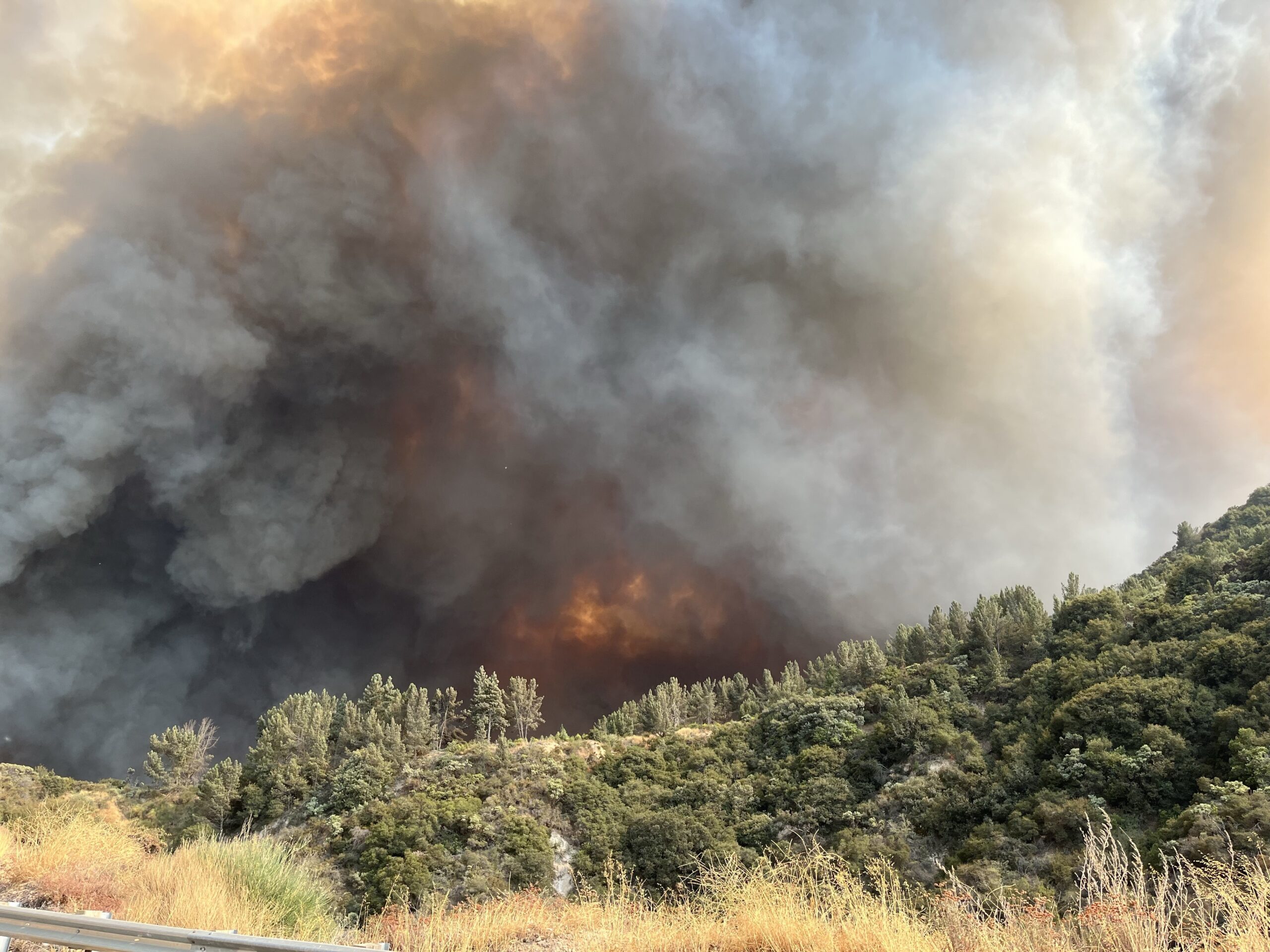What we’re watching: Weekly disaster update, September 9

We know all too well that disaster can strike anytime, anywhere in the world. Some disasters make headlines; others do not. Here at the Center for Disaster Philanthropy (CDP), we monitor the status of disasters worldwide and compile a list of the ones we’re tracking weekly, along with relevant disaster-related media coverage.
Here’s what we’re watching for the week of Sept. 10, 2024.
New or Emerging Disasters
Tropical Storm Francine – U.S.: As of 4 p.m. CDT on Sept. 10, Tropical Storm Francine is churning in the Gulf of Mexico and is predicted to make landfall as a hurricane in southcentral Louisiana on Wednesday afternoon or evening (Sept. 11). It is expected to become a low-level hurricane on Sept. 10 or 11.
The center of the storm is 360 miles southwest of Morgan City and winds extend 140 mph from the center. It will move northward across Louisiana and into Mississippi on the night of Sept. 11 and into Sept. 12.
Wildfires – Multiple States: CDP maintains a North American Wildfires profile with regular updates. While fires are burning in several states, the following are most critical.
- California: As of Sept. 10, 6,045 wildfires have burned just under 1 million acres in 2024. At least 1,103 structures have been destroyed and 145 damaged. The Line Fire in San Bernardino County has grown to almost 26,500 acres, with only 5% containment. Approximately 38,000 structures are threatened, but no homes have been destroyed. Meanwhile, the Boyles Fire in Lake County is just 81 acres with 40% containment but has burned 30 structures, mostly homes, in Clearlake. Thousands of people are evacuated.
- Idaho: Nearly two dozen fires are burning in Idaho, most relatively small. Almost all the fires are burning in a national forest, including several large ones in the Boise National Forest. As of Sept. 10, the Lava Fire merged with the Boulder Fire, reaching 79,000 acres with no containment. The Middle Fork Complex has almost reached 31,000 acres with 30% containment, the Snag Fire has 15% containment and has reached 33,000 acres, and the Wapiti Fire has exceeded 120,000 acres with just 12% containment.
- Nevada: At least 14 structures were confirmed affected by the Davis Fire near Reno, but with 0% containment, the 6,500-acre fire was unsafe for further assessment on Sept. 10. At least 13,000 people were evacuated on Sept. 8.
Flooding – Multiple Counties: Numerous countries have reported heavy rains over the past few weeks. This includes rain associated with riverine flooding, heavy rains, cyclones and seasonal monsoons.
- Northeastern Algeria: The Bou-Said Wadi in Tébessa Province overflowed due to heavy rain on Aug. 30-31, killing two people and affecting dozens of homes. A “wadi” is a ravine or valley that is dry except in the rainy season.
- Cameroon: Nearly 160,000 people in Cameroon’s Far North region have been affected by severe flooding. There is “significant damage to infrastructure, farmland, and disruption of essential services.”
- Guatemala: There have been numerous weather-related incidents in Guatemala since the rainy season began in May 2024, including floods, landslides and heavy rainfall. As of Sept. 4, the National Coordination for Disaster Reduction and WHO PAHO report there have been 28 fatalities across 12 departments of the country, 13 people injured, 24,000 people evacuated in total, 8,600 damaged buildings and five destroyed bridges.
- Niger: More than 650,000 people have been affected by floods and heavy rainfall. Additionally, almost 7,500 acres of crops were destroyed. There have been 200 injuries and 265 deaths in the past three months, but 30 deaths in the week ending Sept. 2.
- Eastern Romania: A cyclone storm stalled over the Black Sea on the Aug. 29-31 weekend, leading to floods in several coastal communities after heavy rain. No casualties were reported, although there were 800 calls for assistance.
- South Sudan: There has been ongoing heavy rain in South Sudan, dating back to May. This increased in intensity and impact throughout late August and into September. As of Sept. 5, more than 710,000 people have been affected in the Abyei Administrative Area and 30 of 78 counties in the country.
- Yemen: More than 500,000 people have been impacted by the most recent floods in Yemen, a country that highlights the challenging intersection of conflict and extreme weather events. In addition to flooding, Yemen is also dealing with increasing food insecurity, a displacement crisis, and disease outbreaks, including a cholera outbreak.
Super Typhoon Yagi – China, The Philippines and Vietnam: Asia’s biggest typhoon of 2024 hit multiple countries in southeast Asia, leaving dozens dead or missing. The storm made landfall on Sept. 6 in China’s southern province of Hainan with strength equivalent to a Category 4 hurricane. The storm also caused wind, rain and flood damage in Guangdong province.
The storm underwent rapid intensification between Sept. 4 and Sept. 5, strengthening by 70 mph. With winds of 160 mph on Sept. 5, Yagi was second only to Hurricane Beryl for cyclonic intensity this year and is likely the strongest in decades in the South China Sea.
In The Philippines, “the storm left 20 dead, several more missing, and over two million affected, with landslides and widespread flooding displacing over 47,600 people from their homes.”
Yagi made landfall in Vietnam with winds just under 130 mph, equivalent to a Category 3 storm. Vietnam’s National Centre for Hydro-Meteorological Forecasting said there had been 8.2 to 17 inches of rain in 24 hours in some areas, with more rainfall and landslides predicted. While widespread infrastructure damage is making communication difficult, at least 3,300 homes and almost 300,000 acres of crops have been damaged in the northern part of the country.
Previous/Ongoing Disasters
Extreme Hunger – Multiple Countries: This standing section will update readers on areas facing extreme hunger.
The Global Network Against Food Crises and the Food Security Information Network released their joint analysis, which is supported by 16 organizations. The updated Global Report on Food Crises “reveals that nearly two million people are now grappling with the most critical level of food insecurity, classified as Phase 5 on the global IPC scale, which tracks acute hunger.”
Key findings were: “Shocks, such as intensifying conflict, El Ninõ-induced drought and high domestic food prices drove worsening food crises in 18 countries by mid-2024.
- Nigeria, the Sudan, Myanmar, Ethiopia, Zimbabwe, Malawi, Chad and Yemen all had at least 1 million more people facing high levels of acute food insecurity than during the 2023 peak.
- Forced displacement of people in food-crisis countries/territories continues to increase, with alarming numbers of people in the Gaza Strip and the Sudan exposed to very high levels of acute food insecurity and malnutrition.
- Acute malnutrition among children and women in food-crisis countries/territories is persistently high, especially in conflict-affected areas.
- The lack of affordability of a healthy diet is becoming an increasingly important driver.
- Of the 14 countries without 2024 data, the Syrian Arab Republic was flagged by the latest FAO-WFP Hunger Hotspots report as being of very high concern between June and October of 2024.”
The World Food Programme says, “Haiti has one of the highest levels of food insecurity in the world. The number of food-insecure people has tripled since 2016. A total 4.35 million Haitians – nearly half the population – do not have enough to eat and 1.4 million are facing emergency levels of food insecurity.” At least 22% of children are chronically malnourished.
One of the poorest countries in the world, Haiti is the poorest country in Latin America and the Caribbean. It has had several environmental disasters in the last couple of decades and faces political upheaval and gang warfare. These factors, combined with displacement, unrest, increasing prices and low crop yields, contribute to the crisis.
CDP resources include:
- CDP’s Global Hunger Crisis Fund supports recovery from hunger and famine worldwide.
- The Haiti Humanitarian Crisis disaster profile summarizes environmental issues and other crises affecting the country to guide funders in how to help.
- Our Famine Issue Insight explores meanings, statistics and levels of hunger definitions.
- Our Nutrition Issue Insight looks at the impact of the lack of food on a person, as well as food and nutrition needs after disasters.
Cholera – Worldwide: The World Health Organization (WHO) published its global cholera statistics for 2023. It showed that cases increased by 13% and deaths by 71% compared to 2022. WHO said that more than 4,000 people died, and 45 countries were affected. Children under 5 composed 38% of cases.
H5 Avian Influenza – Missouri: The first case of H5 avian influenza in a person without animal contact was confirmed in an individual in Missouri. The U.S. Centers for Disease Control and Prevention released a statement on Sept. 6 to announce the case. “It’s also the first H5 case detected through the country’s national flu surveillance system rather than targeted surveillance of the ongoing bird flu outbreak in animals.” This was the 14th case of H5 in the U.S. so far this year.
In addition to the disasters listed above, we actively monitor the following disasters or humanitarian emergencies. For more information, see the relevant disaster profiles, which are updated regularly.
- 2024 U.S. Floods
- 2024 U.S. Tornadoes
- Afghanistan Humanitarian Crisis
- Horn of Africa Hunger Crisis
- Gaza-Israeli Humanitarian Crisis
What We’re Reading
- What happened to predictions of a ‘historic’ hurricane season? – The Washington Post: “The Atlantic just made history for an unexpected distinction: The longest stretch without a single late-summer cyclone. It has meteorologists concerned delicate public trust is at risk.”
- How wildfire smoke threatens health – New York Times: “Environmental scientists believe that wildfires pose a risk to health long after a fire stops burning. But there are many factors they still don’t fully understand, like exactly how smoke moves through the body or how exposure to it might affect human health long after the haze clears.”
- Three ways Pacific nations are adapting to climate change – Down to Earth: “Pacific Island countries are on the frontline of climate change and are leading the way on adaptation and resilience.”
- Grenfell Report: Key findings from the inquiry – BBC: The 2017 fire in Grenfell Tower led to 72 deaths. Last week, the final report of the 6-year public inquiry was published. The building’s cladding was previously found to be the principal reason for the fire, but the 1,700-page report laid out a “chain of failures across government and the private sector” over decades.
- Climate change accelerates: 2023 set multiple new records for drought, with nearly 8% of land area severely affected – Down to Earth: “Heat, sea level, and greenhouse gases reach record high levels as sea ice shrinks, outlines new NOAA report.”
Something fun: While some friends like to tease me for sticking by Android phones, my safety just increased thanks to a new earthquake alert system announced by Google. The alert uses the phone’s accelerometer to collect vibration readings, compares them to crowdsourced data and then sends one of two alerts: Be Aware or Take Action.
